KAYAKING WITH ORCAS
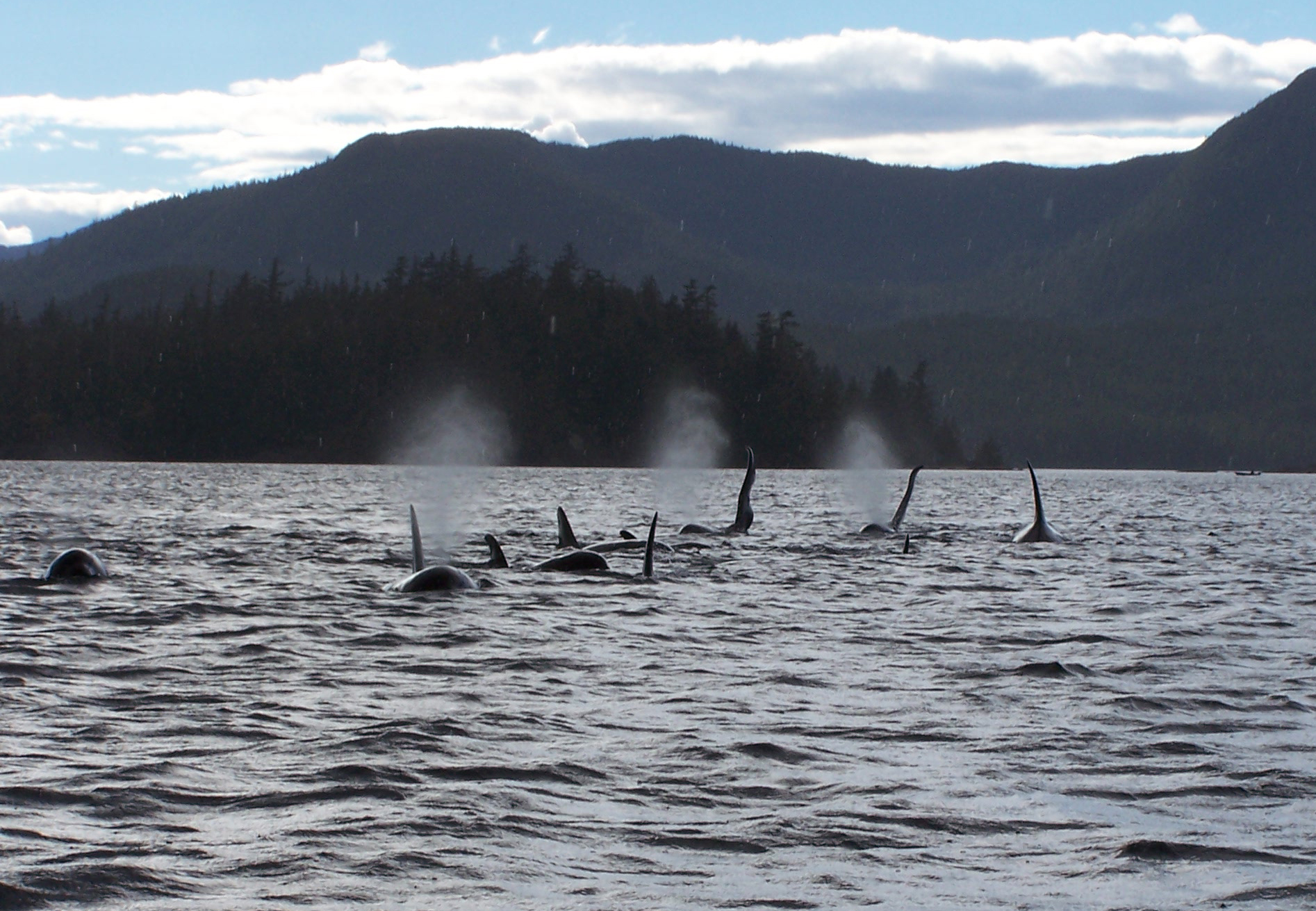 In September 2004, there was a meeting of several of the Northern Resident pods at Orcas Cove. It was an amazing day on the water with more than 30 orcas sighted.
In September 2004, there was a meeting of several of the Northern Resident pods at Orcas Cove. It was an amazing day on the water with more than 30 orcas sighted.
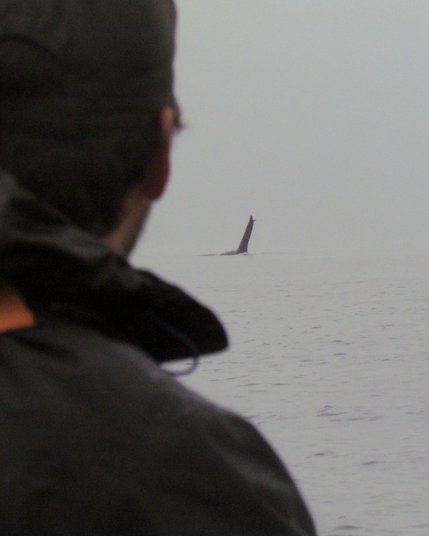 Our lead guide, James, watches a male orca from his kayak at Orcas Cove. Photo by Brent Buckley – Thank you!
Our lead guide, James, watches a male orca from his kayak at Orcas Cove. Photo by Brent Buckley – Thank you!
Everyone loves whales, don’t they? Seeing whales in the wild here in Alaska is a dream for many people. Except the idea of being in a small, human propelled kayak next to a whale makes some people very nervous. With the release of the documentary film Blackfish we’ve seen an increase in the number of people who are concerned about the possibility of being eaten or attacked by an orca while they are kayaking with us at Orcas Cove. Although Greg loves to joke that kayaks are an orcas favorite food: soft on the inside and crunchy on the outside, there has in fact, never been a recorded instance of a wild orca attacking a human. All of the orca attacks on humans have been in captivity. We do not see orcas every day at Orcas Cove but we are fortunate enough to see them from our transport boats and kayak with them regularly throughout the summer. Our guides and boat captains take great care to ensure that we comply with the marine mammal act and view the orcas safely. Fears about orcas attacking kayaks or boats are usually based on misconceptions. Here is a quick and not overly scientific guide to orcas and kayaking with orcas in Southeast Alaska.
The Different Types of Orcas
Thanks to Discovery Channel and National Geographic, the fearsome mammal hunting orcas that work in pods to bump seals off the ice and relentlessly hunt down baby whales have become the image that many people associate with orcas, or killer whales. The name killer whale is thought to have begun as “killers of whales” given to the orcas seen by whalers attacking baby whales but not all orcas eat whales and orcas are the largest members of the oceanic dolphin family, so not even technically whales. There are at least three, and scientists now think possibly four, distinct groups of orcas. Offshore orcas, live off the coast in deep ocean waters. We do not see offshore orcas here on the Inside Passage. Nor do we see orcas of the Antarctic which scientists now think may have be a distinct group of their own. The mammal hunting orcas so often seen on documentaries are called transients. Transient orcas live in small groups of 2 to 6 whales. They eat mostly marine mammals including seals, sea lions, dolphins and even baby whales. Transient orcas are fearsome predators. We have observed them bumping seals off rocks and chasing Steller’s Sea Lions, yet there is no record of transients ever attacking humans. We do see transient orcas several times each summer but it is more common for us to see resident orcas.
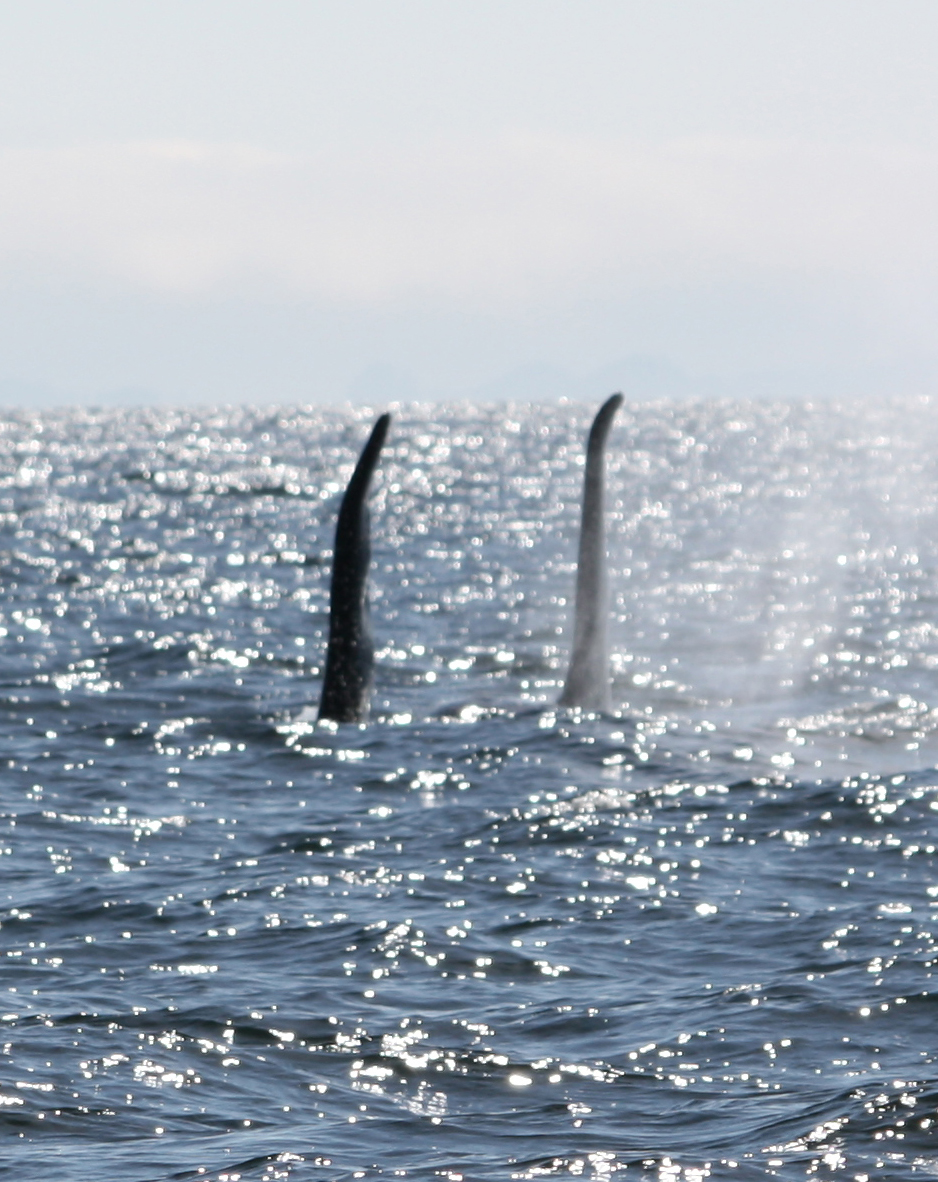 Greg took this shot of 2 male resident orcas from the boat on the way to Orcas Cove in 2013.
Greg took this shot of 2 male resident orcas from the boat on the way to Orcas Cove in 2013.
Resident Orcas
Remember Free Willy? It is one of our favorite movies. Willy and his family are resident orcas. Residents eat mostly fish and some squid and live in large, matrilineal family groups with complex social structures. They are called resident orcas because they are consistently observed in the same areas but that does not mean that they stay in once place for long. Most resident pods have a home range of about eight hundred miles and may travel one hundred miles in a day. The orcas that we see near Ketchikan are part of the community of Northern Residents: resident pods with a range from British Columbia through southern Southeast Alaska. Salmon is the main diet for the Northern Residents. The big run of king salmon to the Whitman Lake Hatchery and the wild salmon runs in George and Carroll Inlets bring the resident pods to Orcas Cove and the Ketchikan area throughout the summer. Resident orcas are easy to spot, even from a distance. Look for a group of blows of different sizes and, if you are close enough, the dorsal fins breaking the surface. Depending on whether they are fishing or traveling, residents may form a close pod moving together in the same direction, or spread out over several miles. Because salmon school close to the shoreline on their spawning runs it is common to see resident orcas very close to the shore pursuing their prey.
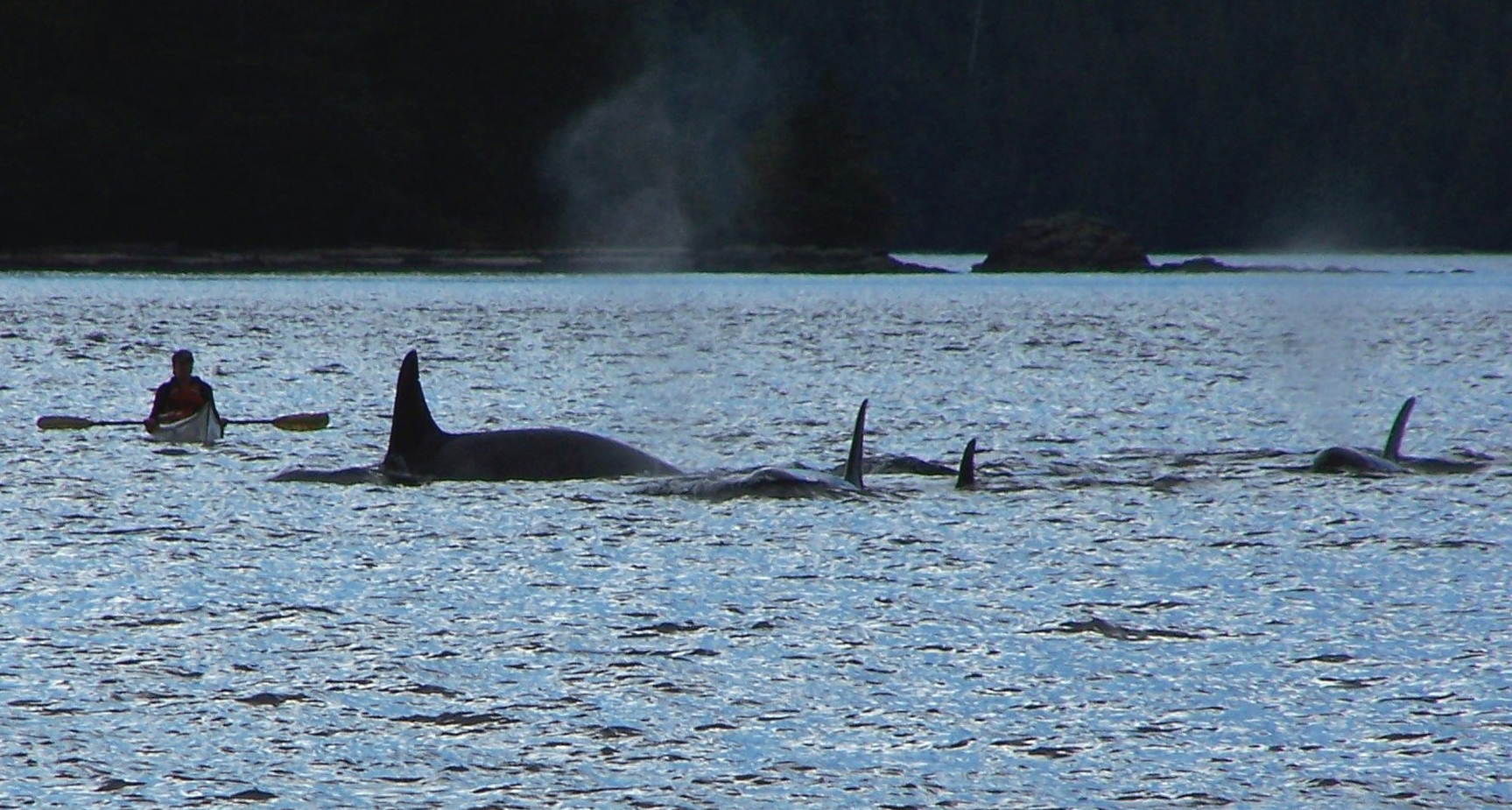 One of my best days at the “office” paddling with the meeting of pods in 2004.
One of my best days at the “office” paddling with the meeting of pods in 2004.
What to do When you see Orcas From a Kayak
Remain calm, well that’s almost impossible, but start by not getting so excited that you fall out of your kayak or tip over trying to get a good photo. Stop paddling, observe and enjoy. At the first sight of a group of orcas, some folks want to paddle straight over and try to pet them while others head for the hills. Don’t worry: orcas are not like bears. If you run (paddle away) they are not going to think that you are something to eat but the best thing to do is stop, float, and enjoy the experience. Try to discern their direction of travel. If they are heading straight towards you, stay where you are. Don’t panic or paddle and let the orcas choose whether to go under or around you: whichever they do it is quite a thrill. If the orcas are moving and you want to watch them, paddle parallel to their path of travel at a safe and respectful distance. We never want to paddle too close or into the middle of a group of orcas. Nor should we chase them or do anything that will make them change their behaviour. I know, you want to paddle over, say hello and pet their big, beautiful black and white heads (me too!) but that’s not going to happen and no matter how many hand signals or whistles you try, these orcas are not going to perform. The show you are watching is not performed three times a day. Take photos but take care to also appreciate the extraordinary nature of the moment: listen to the their blows as they break the surface, smell the salty, fishy air and watch the way the young and their mothers swim in perfect synchrony. It is a magical experience and a photo will never capture it.
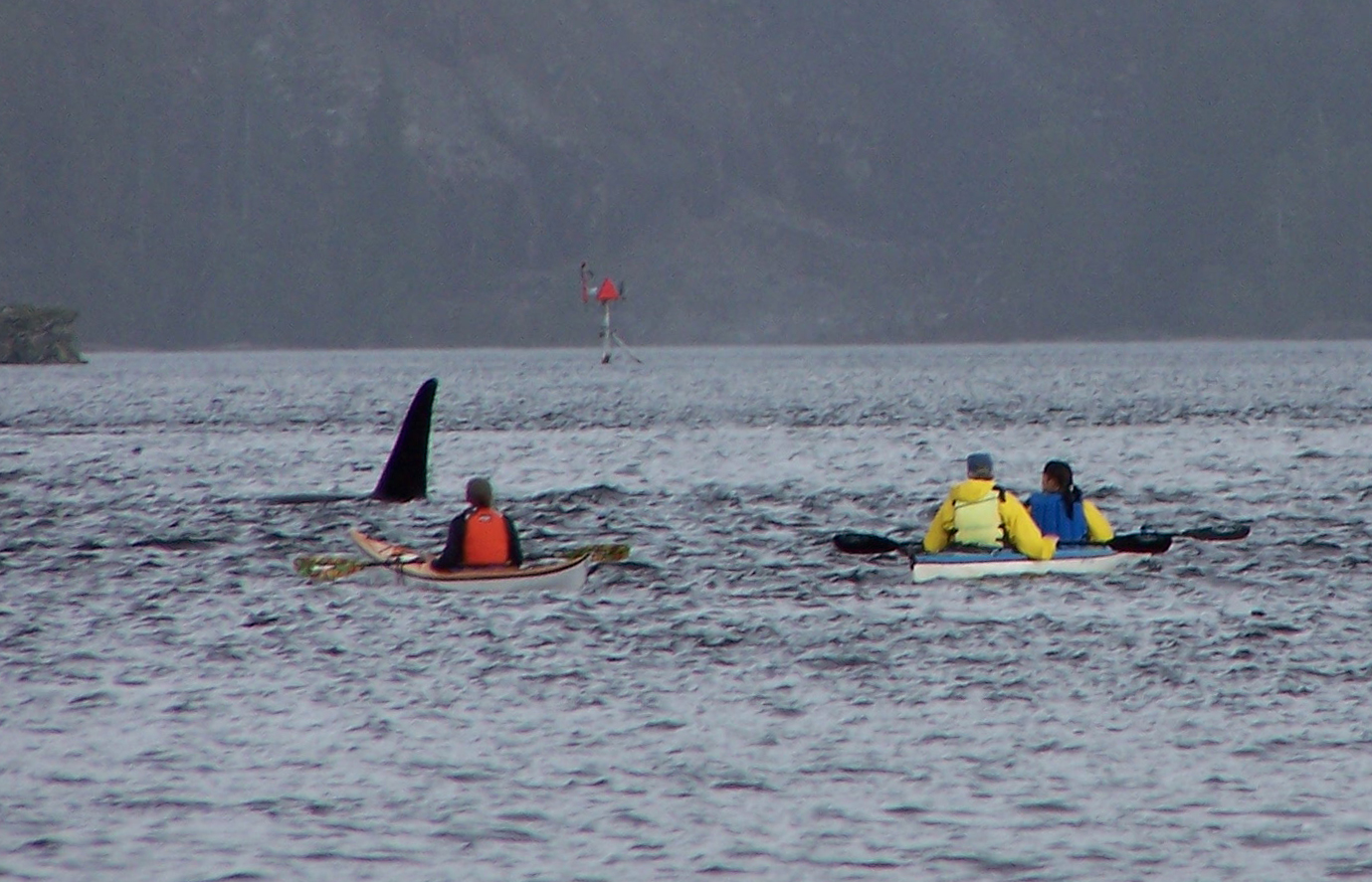 Stop paddling and be amazed.
Stop paddling and be amazed.
Will we see orcas?
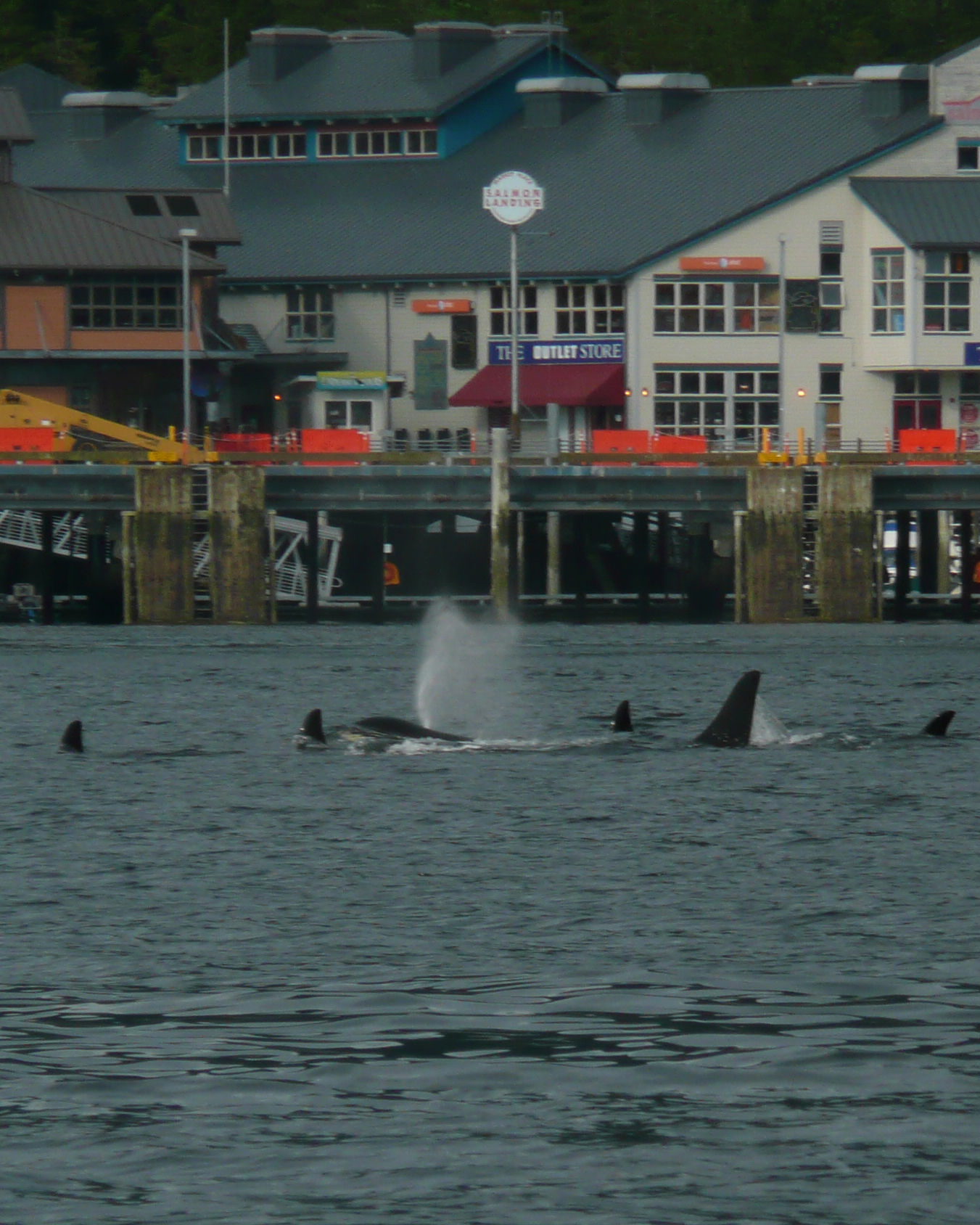 We never know when the orcas will visit. Resident pods of orcas are often seen right from the dock in downtwon Ketchikan.
We never know when the orcas will visit. Resident pods of orcas are often seen right from the dock in downtwon Ketchikan.
Observing orcas in the wild never gets old. Nor does watching our guests seeing these magnificent animals at home in their natural environment. Reactions range from gasps to giggles and not a few tears. We never know when we will see the orcas on our kayak tours, which is part of what makes wild encounters so incredibly special. What we do know we will see each day is the spectacularly beautiful and mostly untouched natural environment that is the orcas home here in Southeast Alaska: the old growth forests; the wild salmon streams; the countless inlets and islands and the cold, clear ocean. There are so many layers to Alaska’s magnificence, the wildlife is just the cherry on top.
Disclaimer
This blog post is based on our years of experience observing and paddling with orcas and is by no means a definitive guide. Orcas are very large, wild animals and should not be approached. Triple caution should be used near transient orcas. Kayakers planning to paddle with Orcas should familiarize themselves with the Marine Mammal Act. Some of the factual information about orcas comes from the excellent books listed below, all of the errors are the author’s own.
Our Favorite Books About Orcas
Listening to Whales: What the Orcas Have Taught Us. by Alexandra Morton. Ballantine Books, June 1, 2004.
Killer Whales: The Natural History and Genealogy of Orcinus Orca in British Columbia and Washington. John K. B. Ford, Graeme M. Ellis Kenneth, C. Balcomb. UBC Press, January 1, 2000.
Transients: Mammal-hunting Killer Whales of British Columbia, Washington, and Southeastern Alaska. John K. B. Ford, Graeme M. Ellis. UBC Press, January 1, 1999.
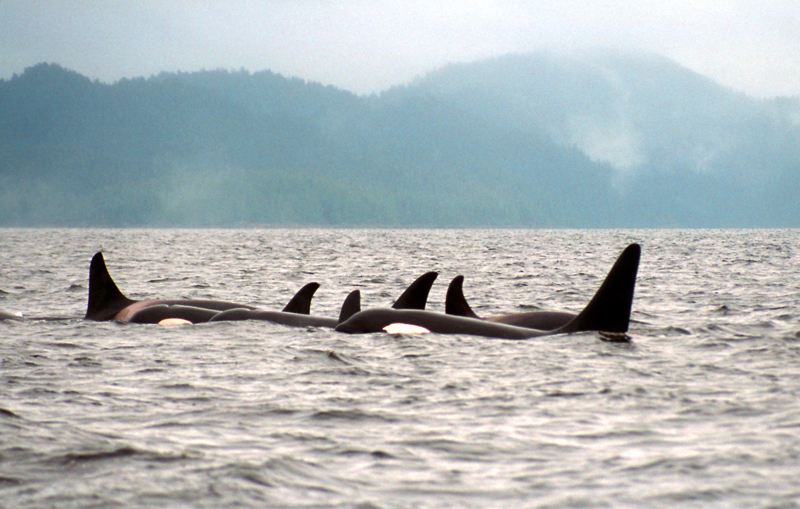 Resident orcas in George Inlet on one of Greg’s daytrips in the early years of Southeast Sea Kayaks.
Resident orcas in George Inlet on one of Greg’s daytrips in the early years of Southeast Sea Kayaks.
